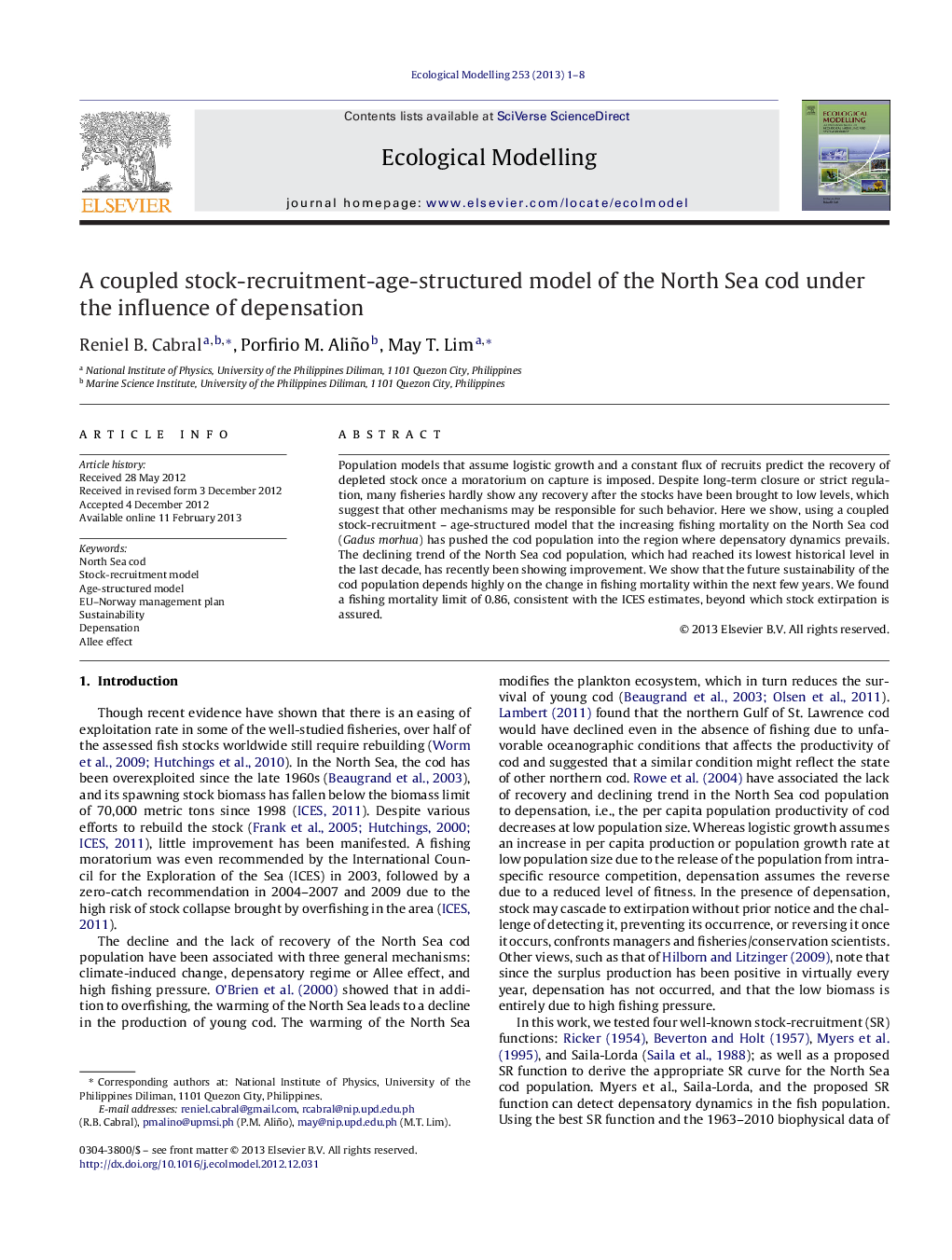| Article ID | Journal | Published Year | Pages | File Type |
|---|---|---|---|---|
| 4376216 | Ecological Modelling | 2013 | 8 Pages |
Population models that assume logistic growth and a constant flux of recruits predict the recovery of depleted stock once a moratorium on capture is imposed. Despite long-term closure or strict regulation, many fisheries hardly show any recovery after the stocks have been brought to low levels, which suggest that other mechanisms may be responsible for such behavior. Here we show, using a coupled stock-recruitment – age-structured model that the increasing fishing mortality on the North Sea cod (Gadus morhua) has pushed the cod population into the region where depensatory dynamics prevails. The declining trend of the North Sea cod population, which had reached its lowest historical level in the last decade, has recently been showing improvement. We show that the future sustainability of the cod population depends highly on the change in fishing mortality within the next few years. We found a fishing mortality limit of 0.86, consistent with the ICES estimates, beyond which stock extirpation is assured.
► We developed a stock-recruitment-age-structured model to assess North Sea cod. ► The cod population is now in the region where depensatory dynamics prevails. ► Sustainability of the cod stock depends on the timely change in fishing pressure. ► We found a fishing mortality limit of 0.86 beyond which extirpation is assured.
